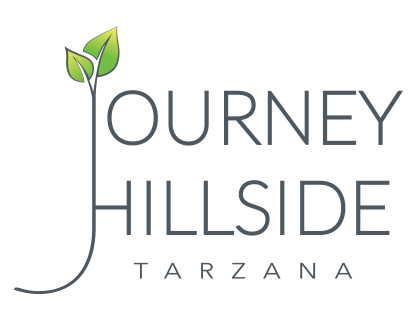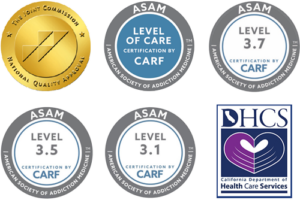WHAT IS HEROIN?
Heroin is a highly addictive drug notorious for its dangerous effects and painful withdrawal symptoms. As the opioid crisis in the United States takes hold, heroin use has risen as people look for cheaper, more accessible drugs. Consequently, overdoses are on the rise as well. When it comes to illicit substances, it’s impossible to know the exact quantity, quality and composition of the drug being ingested, leading unsuspecting users to overdose on high purity and fentanyl-laced heroin. In addition to causing fatal overdoses, use of the drug can also lead to a variety of mental health disorders and problems and put users at risk of contracting infectious diseases such as hepatitis or HIV.
At Journey Hillside Tarzana, we understand what’s at stake when it comes to heroin addiction in addition to any other form of drug addiction. That’s why we offer premier-level treatment backed by clinical studies, scientific evidence and a high success rate. Our team combines inpatient drug rehab with critical mental health services and referrals to intensive, outpatient treatment programs to help our clients overcome drug and alcohol addiction. Recovery is only a step away — and private health insurance acceptance is one of our many hallmarks.
By utilizing a multidisciplinary approach, highly individualized clinical services, and an experienced team of addiction experts, we can help patients struggling with heroin use reclaim their freedom and discover a healthy, independent life without opioids.
Drug and Alcohol Addiction by the Numbers
Drug and alcohol addiction continue to be significant public health concerns in the United States, with widespread personal, societal, and economic impacts. Here’s an overview of the prevalence and costs associated with drug or alcohol addiction:
- Prevalence:
- According to the National Survey on Drug Use and Health (NSDUH), approximately 19.7 million American adults (aged 12 and older) battled a substance use disorder in 2017.
- The Substance Abuse and Mental Health Services Administration (SAMHSA) estimates that around 20.8 million people aged 12 or older had a substance use disorder in 2018.
- Alcohol remains the most commonly abused substance, with an estimated 14.4 million Americans aged 12 and older having an alcohol use disorder in 2018.
- Personal Costs:
- Substance abuse can have devastating effects on individuals and their families, including physical health problems, mental health issues, strained relationships, and legal problems.
- Addiction often leads to job loss, financial instability, homelessness, and involvement in criminal activities.
- Individuals struggling with addiction may experience deteriorating physical health due to substance abuse, leading to chronic conditions and even premature death.
- Mental health disorders frequently co-occur with substance abuse, complicating treatment and recovery efforts.
- Financial Costs:
- The economic burden of substance abuse in the United States is substantial, encompassing healthcare expenses, lost productivity, criminal justice costs, and other related expenditures.
- According to the National Institute on Drug Abuse (NIDA), the total economic cost of substance abuse in the United States exceeds $740 billion annually.
- This cost includes healthcare expenses for treatment of substance use disorders and associated medical conditions, as well as the economic impact of lost productivity due to absenteeism, unemployment, and premature death.
- Substance abuse also places a significant financial burden on the criminal justice system, including costs related to law enforcement, court proceedings, and incarceration.
- Impact on Society:
- Substance abuse contributes to a wide range of social problems, including family breakdown, child neglect, domestic violence, and community disintegration.
- The opioid epidemic, in particular, has led to a surge in overdose deaths and strained healthcare systems across the country.
- Substance abuse disproportionately affects marginalized communities, exacerbating existing disparities in health outcomes and socioeconomic status.
Programs like Journey Hillside Tarzana specialize in providing the substance abuse treatment people need to overcome their addictions and to lead healthier, happier lives. With drug rehab centers around the country, the Los Angeles area stands out thanks to Journey Hillside. Substance abuse treatment and substance abuse prevention programs help people thrive.
SIGNS OF HEROIN ADDICTION
Heroin affects the brain in unique ways, so dependency, tolerance and addiction often set in quickly. Since heroin can be smoked, snorted or injected, the signs of use may differ depending on the preferred route of administration. The presence of paraphernalia is often evidence of heroin use, such as: burnt tin foil; needles and syringes; spoons and filters; cut straws, pens and other devices used for insufflation or smoke inhalation; and stamped baggies or torn balloons. You may also notice a number of other signs, including:
- SMALL, PINPOINT PUPILS
- ALTERNATING PERIODS OF CONSCIOUSNESS AND WAKEFULNESS (NODDING OFF)
- MOOD SWINGS
- TRACK MARKS (BRUISES AND SCARS) AT INJECTION SITES
- WITHDRAWAL SYMPTOMS
- ISOLATION FROM FAMILY AND FRIENDS
- TROUBLE AT WORK OR SCHOOL
- UNEXPLAINED WEIGHT FLUCTUATIONS
- SUDDEN FINANCIAL PROBLEMS
- DECREASED HYGIENE
- EXCESSIVE ITCHINESS
Although the signs and symptoms vary from person to person, the patterns of heroin abuse become more noticeable as the addiction worsens. If you suspect someone you care about is struggling with opioid use, it’s recommended that you seek the help of a professional to identify the problem. Beginning treatment as soon as possible for heroin addiction is essential to preserving an individual’s health, wellness and safety.
HOW HEROIN ADDICTION WORKS
Heroin is a semi-synthetic opiate that binds to opioid receptors in the brain. These receptors are responsible for controlling pain, relaxation and more. Normally, your brain activates these receptors in response to painful stimuli, such as a broken bone or a bee sting. When we are injured, endorphins are released that bind to opioid receptors, reducing the sensation of pain and managing stress levels. When an individual consumes heroin, the brain is flooded with chemicals that mimic our body’s natural opioids, binding to the same receptors and blocking the electric impulses that signal pain. In addition to blocking pain, opioids also trigger additional effects such as euphoria, a general feeling of warmth and a sense of well-being. At the same time, side effects such as constipation and slowed respiration occur. Heroin’s effects on breathing can lead to a deadly overdose, slowing (or stopping) it enough to prevent the brain from receiving an adequate amount of oxygen. This can cause permanent brain damage, coma or death.
Opioids also trigger the release of dopamine in the brain’s reward centers. Your brain thinks that the source of this influx of dopamine is a highly rewarding, essential behavior, so it signals for you to repeat the experience. Over time, intense cravings develop that often lead to addiction. When opioids are used continuously, they also begin to affect the balance of neurotransmitters in the brain. Heroin decreases the activity of a group of neurons responsible for things like wakefulness, blood pressure, stress levels and more. These neurons still want to do their job, however, so they compensate for the dampening effects of heroin by increasing their level of activity. When opioids are present, they offset this heightened activity; when opioids aren’t present, the neurons continue to fire extensively and trigger uncomfortable withdrawal symptoms such as anxiety, depression, muscle cramps and diarrhea. It takes time for your brain to readjust to functioning without opioids and these symptoms usually persist for a week or more. The effects of withdrawal are what makes it so difficult to escape from the cycle of heroin abuse without professional intervention.
HEROIN ADDICTION TREATMENT LOS ANGELES
At Journey Hillside Tarzana, our dedicated medical and addiction specialists are highly experienced in treating opioid-dependent individuals. Recovery from heroin addiction typically begins with detox, which gives the body time to remove traces of the drug and realign to a more balanced state. When patients arrive, we conduct a thorough assessment to identify the severity of an individual’s addiction and develop a customized treatment plan that will best meet their specific needs. During detox, we provide a number of treatments and therapies to keep patients comfortable throughout the withdrawal process. Our nursing staff and physicians will monitor patients on a 24/7 basis and closely coordinate care plans to ensure an optimal level of comfort and safety. Treatment plans will focus on symptom management and may include the use of medication-assisted treatment, individual or group therapy, mental health care and more.
One of our most important — and effective — treatment options is the MAT (Medically-Assisted Treatment) program. In essence, immediately upon admission our patients are assessed by our medical team and is assessed in terms of withdrawal symptoms and provided with medications to ease those symptoms. Journey Hillside’s team uses several medications to significantly ease opiate withdrawal symptoms including subutex and suboxone and other medications on a case by case basis.
Our #1 goal upon admission is to use MAT to ease the withdrawal symptoms as is medically necessary and that our client’s comfort is our initial concern.
After detox, patients will transition into residential care to begin the hard work of healing from addiction. This includes relapse prevention training and other techniques for recovery management like dialectical behavior therapy. We offer a full range of signature services, specialized programs and evidence-based treatments that go above and beyond industry standards to ensure each patient meets their recovery goals.
HEROIN TREATMENT OPTIONS:
- COGNITIVE BEHAVIORAL THERAPY
- MEDICATION-ASSISTED TREATMENT
- HOLISTIC CARE
- INDIVIDUAL AND GROUP THERAPY
- EXPERIENTIAL THERAPIES
- 12-STEP METHODOLOGY
- MEDITATION AND MINDFULNESS
- PHYSICAL FITNESS AND EXERCISE
- CHEMICAL DEPENDENCY EDUCATION
- FAMILY AND ALUMNI SUPPORT
Our treatment practices and approaches are regularly updated to ensure that we are consistently providing the highest level of care possible. Furthermore, each patient receives a customized treatment plan tailored to their specific strengths. This helps us provide effective care and engage patients in an approach that resonates with them.
ADDITIONAL TREATMENT OPTIONS
For substance abuse prevention and other substance use disorders, like alcohol addiction, drug addiction, dependence on illicit drugs, world class addiction treatment is only a phone call away. The recovery process is made fulfilling by providing our clients with the inpatient residential treatment options they need to overcome drug dependence.
Our treatment facility and its services include family therapy, understanding substance abuse issues, support groups, and individualized treatment plans. As a leading rehab facility in southern California and west Los Angeles areas, our rehabilitation services have been recognized for excellence, care, and discretion. The individualized treatment plan specially tailored to each clients’ needs creates the highest rate for success for both short term and long term sobriety. This can be life changing not only for you, the client, but for your family, friends, co-workers and everyone else around you who suffered harm as a result of your disease.
PROFESSIONALS TRACK
At Journey Hillside Tarzana, our Professionals track can help those in high-stakes careers struggling with heroin addiction and mental health issues find the help they need without sacrificing their status or reputation. By balancing career and recovery, our specialized program expertly manages the unique needs of professionals seeking treatment with higher degrees of individual therapy, targeted peer support and accountability, stress management, continuing care and more. We also communicate closely with state licensing boards and other organizations throughout the treatment process, providing regular progress reports and notification when specific requirements are met. This ensures that patients can maintain their professional status and safely return to their careers and families after completing treatment.
CONTACT JOURNEY HILLSIDE TARZANA
Recovering from addiction isn’t a journey you have to take alone. At Journey Hillside Tarzana, we are intimately familiar with the road ahead and will be there to support you every step of the way. Not only will you find the tools you need to overcome addiction, but you’ll also discover an oasis nestled in the hills of Los Angeles designed with your comfort in mind. Our substance abuse treatment center provides the peace, serenity and privacy you need to take a step back from daily life and truly connect with the process of recovery. If you’re ready to learn more about our heroin addiction treatment centers and programs and how they can help, contact or call us today at 877-761-2723 and begin your journey today.
FREQUENTLY ASKED QUESTIONS ABOUT HEROIN ADDICTION
Why is heroin so addictive?
Heroin’s addictive nature arises from its rapid entry into the brain, binding to opioid receptors and creating an intense euphoria. As usage continues, the brain builds tolerance, needing larger amounts to replicate this sensation, hence fostering a relentless cycle of addiction. Due to the life-threatening consequences of long-term substance abuse alone, people who are ravaged by the effect of heroin use find hope when seeking out a heroin addiction treatment center in Los Angeles.
How long does it take to get addicted to heroin?
Addiction time varies among individuals due to factors such as genetics, frequency of substance use disorder before, and psychological makeup. Some may develop dependence within weeks, while others might take months. Nevertheless, it’s crucial to know that heroin poses an addiction risk even from the first use.
What does a heroin addict look like?
Heroin addiction manifests differently in individuals, making it hard to generalize an addict’s appearance. However, physical signs may include weight loss, needle marks, tiny pupils, and frequent nodding off. Emotional and behavioral changes like social withdrawal, financial problems, or frequent mood swings might also be observed.
What is the first step in treating heroin addiction?
When it comes to heroin rehab, Los Angeles treatment, such as provided by Journey Hillside, is your best and smartest first step. By turning to our caring and qualified professionals, you are also taking the all-important step of acknowledging the problem and seeking help. Detoxification follows, where medical professionals manage withdrawal symptoms, ensuring safety and comfort. This precedes comprehensive therapies addressing the physical, psychological, and social aspects of addiction. Bear in mind all of our clients undergo deeply personalized treatment. We understand that all situations are different, so whether you are besieged with meth addiction, heroin, alcohol abuse or dependence – or any other substance abuse disorder or use condition – we are here to help you every step of the way.
What medication is best for heroin withdrawal?
Regarding heroin detox, Los Angeles Journey Hillside provides many therapy options that make weaning yourself off of heroin far more comfortable to lessen unsavory withdrawal symptoms – this includes medical detox. Our inpatient heroin addiction treatment and detox center utilizes medications such as Methadone, Buprenorphine, and Naltrexone, which are used to manage heroin withdrawal symptoms and reduce cravings. However, the choice of medication is individualized, based on the patient’s mental health conditions and status, addiction severity, and potential interactions with other medications.
How long does heroin treatment usually last?
The duration of heroin treatment varies depending on individual needs and recovery progress. While some may require a few months of treatment, others might need years or lifelong management. It’s noteworthy to mention that recovery is a journey, not a destination. Our clients experience remarkable results with our tailored treatment plans, dual diagnosis treatment options, and alternative therapies – all of which work together for progressive healing and long-term recovery.
What is the success rate of heroin addiction treatment?
Success rates fluctuate depending on various factors like the first substance abuse treatment, individual’s commitment to recovery, the quality of the first residential treatment or heroin rehab treatment program, and post-treatment support. It’s worth noting that everyone is different, and therefore recovery looks different for everyone. There might be additional elements in recovery that must be considered. For example, someone who is grappling with heroin addiction while simultaneously abusing oxycodone will experience a different time length and success rate for recovery than others. That said, studies show that integrating medication-assisted treatment with counseling and social support significantly enhances recovery prospects.
How can you support others with heroin addiction?
Supporting someone with a heroin addiction entails emotional support, encouraging professional help, participating in counseling sessions, and promoting healthy lifestyle changes. It’s also important to educate yourself about the addiction your loved one is dealing with. Each addictive scenario is unique. Whether your loved one is dealing with heroin, cocaine addiction, and crack addiction, or alcohol dependency – be sure to be forearmed about the particular addiction so that you may be able to exert compassion and understanding when helping others. Also, maintain patience and understanding, recognizing that recovery is a gradual process laden with potential setbacks.
Can you be a functioning heroin addict?
Though some individuals manage to maintain work and relationships while using heroin, prescription drug use, alcohol, or other substances, it’s a precarious state. ‘Functioning’ doesn’t equate to living a healthy or fulfilling life. Over time, addiction’s toll on health, relationships, and overall life quality becomes increasingly detrimental.



